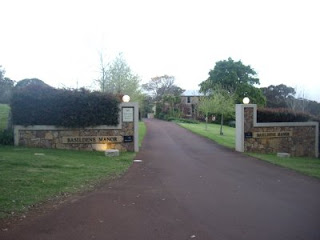
Tonight I presented a lecture about Cyber talk: The presentation was a brief introduction to the Internet, focusing mainly on blogging. The aim of the presentation was to raise the awareness of midwives about the internet, who blogs and why, also to highlight the legal and professional responsibility of cyber mediums such as Facebook, MySpace, Skype, YouTube, Twitter and blogging. Currently there are approximately 22million blogs online. Blogs are becoming one of the fastest growing mediums for discussions relating to marketing, legal issues, health, political activism and social change.1
So, what is a blog? It’s a journal, reflection, diary, newsreel or a newsletter. However you describe it, it is something you write that is personal and informal for the world to read. Blogs are designed for the public forum – they can be updated daily, weekly, monthly or whenever the writer chooses. Blogs are very easy to set up – any of the major search engines will direct you to a site of your choice and you simply follow the instructions. 2
Major legal issues surrounding publishing on the Internet relate to: defamation, copyright, trademarks, moral rights and confidentiality. I am sure there are more but for now I will concentrate on these relating to midwifery.
All Midwives be they; community, independant, hospital based are bound by legislation such as the Nurses and Midwives Act. Within this framework we are regulated by the ANMC Code of Conduct (2008),
Code of Ethics(2008) &The Competency Standards for the Registered Midwife (2006). If midwives fail to meet the required standards of these Codes, then they can face disciplinary action as stated within the legislation. Therefore midwives need to know and understand what the Codes mean and how they work. It is important to remember when you are blogging to be professional at all times, being mindful not to bring our profession into disrepute. Once something is published on the web it is very hard to delete, it is passed around the cyber world like lightening creating lots of threads and being saved in different places.
There are many health professionals blogging, sharing stories, practices, education and reflecting care given. This increases the risk of breaking patient/client confidentiality due to the blogger or authors sharing too much information, such as subspecialties, names, places and content.
The Journal of General Internal Medicine published an article titled “STUDY HIGHLIGHTS RISK OF BREAKING CONFIDENTIALITY IN BLOGS” this was a study that examined 271 medical blogs and found that 56% of the blogs contained enough information to reveal the author’s identity. 3 The study found that blogging was a great way to reach both patients and health professionals so long as people were responsible about it. However “blogging does pose serious concerns about confidentiality and bringing the profession into disrepute. 3”
Defamation occurs when one person communicates material that damages the reputation of another. This can be verbal, written or pictures and the publication must reach someone else other than the person being defamed. However there are several defences to defamation such as: is it a ‘fair comment’ on a matter of public interest or was it simply an opinion, was it an honest opinion of the author 3.
ANMC Professional conduct refers to the manner in which a person behaves while acting in a professional capacity. It is generally accepted that when performing their duties and conducting their affairs professionals will uphold exemplary standards of conduct, commonly taken to mean standards not generally expected of lay people or the ‘ordinary person in the street’.
The moral from this evening's presentation is to know your ANMC Codes inside out, they provide you with a tremendous framework. As for my presentation, I must remember to have my cheat sheet with me, because once I start talking lots of new ideas come through and I forget the ones I was going to focus on. This is such a massive topic that I really just tipped the iceberg.
Happy Blogging - 'have blog will travel'
References:
1. Sylvia Mercado-Kierkegaard, Blogs, lies and the doocing: The next hotbed of litigation? Science Direct.
2.http://www.artslaw.com.au/legalinformation/LegalIssuesForBloggers.asp
3. BMJ 2008;337:a1043; Study highlights risk of breaking patient confidentiality in blogs.


















